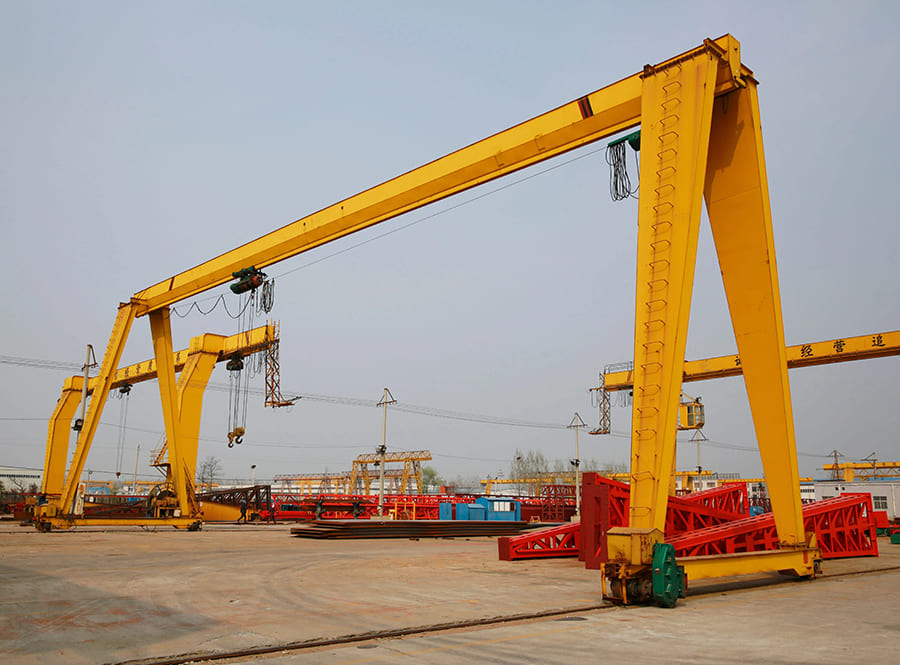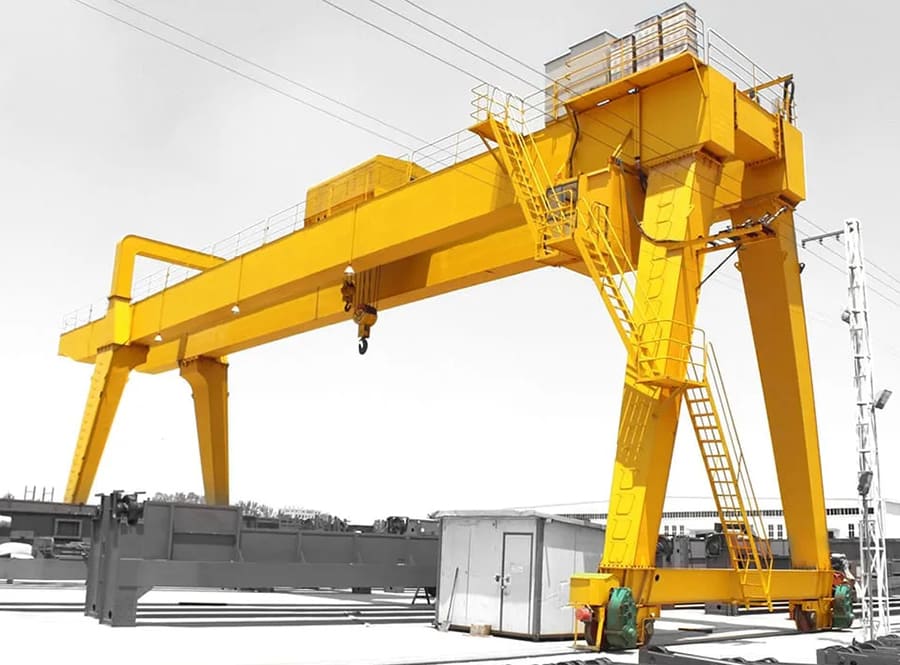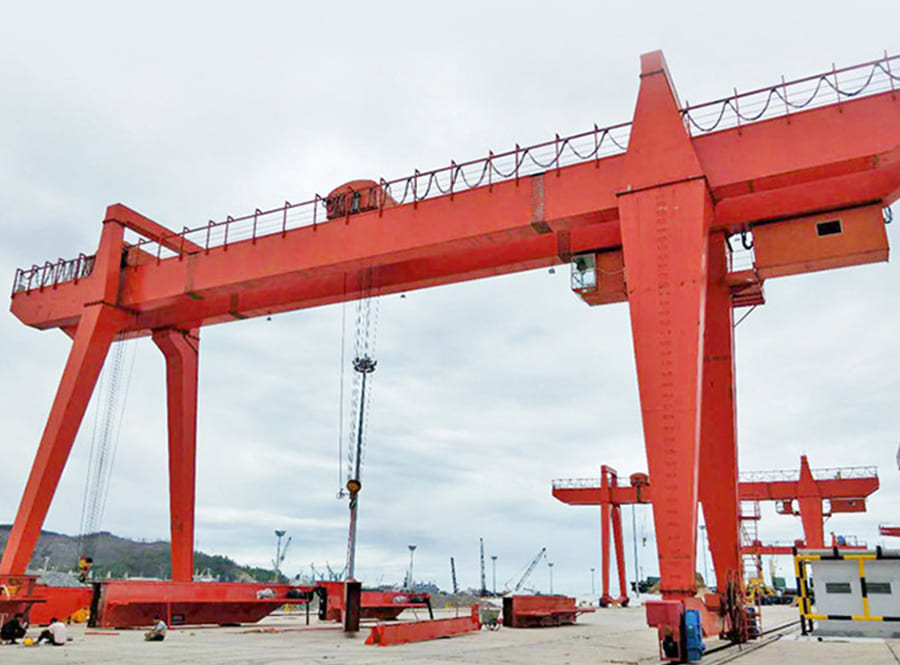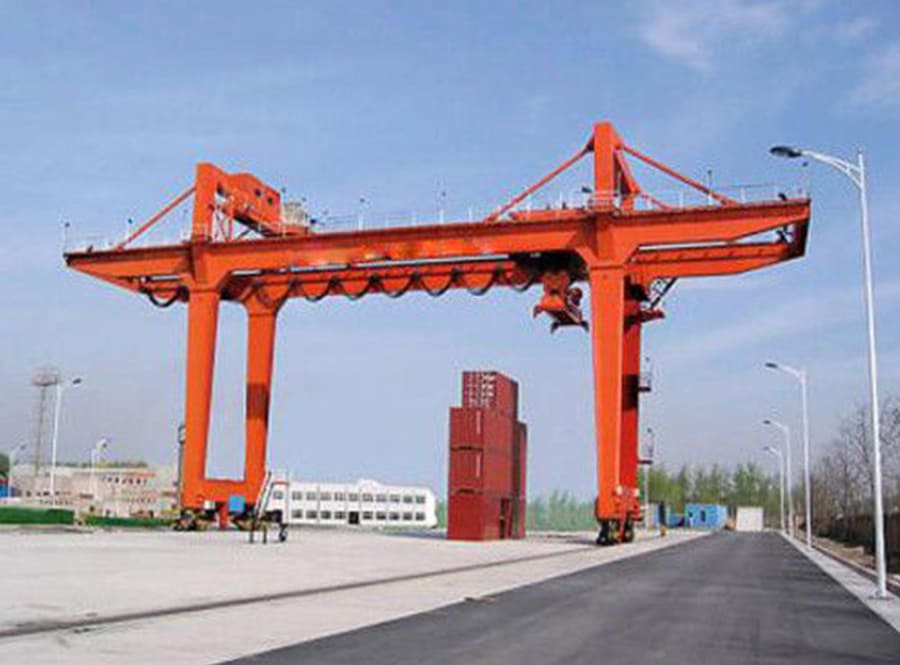The gantry crane is a bridge-type crane in which the horizontal bridge is set on two legs to form a gantry shape. This kind of crane runs on ground tracks and is mainly used for handling and installation operations in open storage yards, shipyards, power stations, ports, railway cargo stations, etc.
The structure of gantry crane
The hoisting mechanism, trolley operating mechanism and bridge structure of the floor mounted gantry crane price are basically the same as those of the bridge crane. Due to the large span, most crane operating mechanisms adopt separate driving methods to prevent the crane from skewing and increasing resistance and even causing accidents. The lifting trolley of the gantry crane runs on the bridge frame, and some lifting trolleys are just jib-type cranes. The legs on both sides of the bridge are generally rigid legs; when the span exceeds 30 meters, one side is often a rigid leg, and the other side is a flexible leg connected to the bridge through a ball hinge, making the gantry a statically determined system. , This can avoid additional stress caused by lateral thrust under the action of external load, and can also compensate for the longitudinal temperature deformation of the bridge. The gantry crane has a large wind area. In order to prevent sliding or overturning under the action of strong wind, it is equipped with anemometer and floor mounted gantry crane system rail clamp interlocked with the operating mechanism. The bridge can be without cantilevers at both ends; it can also be cantilevered at one end or with cantilevers at both ends to expand the operating range. The semi-gantry crane bridge has outriggers at one end and no outriggers at the other end, and runs directly on the high platform.

Types of gantry cranes
① Ordinary floor mounted gantry crane supplier: This kind of crane has a wide range of uses and can transport various items and bulk materials. The lifting capacity is less than 100 tons and the span is 4 to 35 meters. Ordinary gantry cranes with grab buckets work at a higher level.
②Hydropower station gantry crane: mainly used for lifting and opening and closing gates, and can also be used for installation operations. The lifting capacity reaches 80-500 tons, the span is small, 8-16 meters, and the lifting speed is low, 1-5 meters/min. Although this kind of crane is not frequently lifted, the work is very heavy once it is used, so the work level must be appropriately increased.
③Shipbuilding gantry crane: used for assembling ship hulls on the slipway. There are two lifting trolleys: one has two main hooks, running on the track on the upper flange of the bridge; the other has a main hook and an auxiliary hook, on the The bridge runs on rails on the lower flange to facilitate the flipping and lifting of large hull segments. The lifting capacity is generally 100 to 1500 tons; the span is up to 185 meters; the lifting speed is 2 to 15 meters/min, and there is also a micro-movement speed of 0.1 to 0.5 meters/min.

④Floor mounted gantry crane equipment: used in container terminals. After the trailers transport the containers unloaded from the ship by the quay wall container carrying bridge to the yard or rear, they are stacked by the container gantry crane or directly loaded and transported away, which can speed up the turnover of the container carrying bridge or other cranes. A yard that can stack containers with 3 to 4 layers in height and 6 rows in width is usually of tire type, but rail type is also used. Compared with container straddle trucks, container gantry cranes have larger spans and heights on both sides of the mast. In order to meet the transportation needs of port terminals, this kind of crane has a higher working level. The lifting speed is 35 to 52 meters/min; the span is determined by the number of rows of containers that need to be crossed, which is about 60 meters. The lifting capacity of the container for “single box” operation is about 40.5 tons, and the lifting capacity of “double 20-foot container” operation is about 40.5 tons. The lifting capacity is available in two specifications: 61 tons and 65 tons.





















